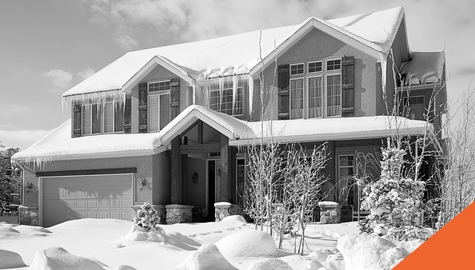9 Tips for Moving in the Winter
Wednesday, 27 November 2019
Congratulations on the purchase of your new home! Winters in Canada can be a little unpredictable. If you are moving in the winter, you may have some additional challenges than you would have in the warmer months. Take a read of our top tips to safely moving to a new house in the winter.
-
Remember the Movers when Moving in the Winter
As far as movers go, opting to move in the winter can be a smart idea. This is the off-season for moving companies, so they can be flexible with dates if anything needs to be moved around. Moving in the winter is a lot harder than moving in the summer, so it might be best to leave it to the professionals to load and unload your belongings, they likely have more experience when it comes to navigating winter moves.
Keep your movers in mind throughout the day. Prepare a hot pot of coffee, some hot chocolate or cider. This will show your appreciation to the movers and give everyone a chance to warm up. Because moving companies do not get a lot of clients this time of year, if you feel comfortable enough it is beneficial to thank them for coming out and offering them a good tip for all the hard work they have done. If you’d rather save some cash, ask your friends to help you instead of hiring movers!
-
Keep Checking on the Weather
With winter comes a lot of snow, sleet, cold wind, and hail. The weather can also change quickly, and wildly. Therefore, it’s very important to check the weather well in advance before the moving day. If the weather is bad, you may have to reschedule if you have hired movers. Expect to be very flexible when it comes to moving dates, because you never know when a winter storm is going to come. Also, expect for roads to be closed or longer travel times if you are moving a far distance.
-
Protect your Floors
Keep in mind that several people are going to be walking in and out of both homes for a few hours at a time. Use cardboard or plastic sheeting to cover the floors to protect them from snow, water, and dirt. It will also help protect the floors from scratches, stains, and make for an easier clean up. If you can, use heavy-duty tape to hold to cover in place. Make sure to test the tape out on your floors first to see if it causes any damage before putting it all through your home.
-
Check Utilities
For the house you are moving out of, having people moving in and out all day is going to take a toll on your furnace as it is going to be trying to heat the house with the cold air constantly coming in. If temperatures are not below freezing, turn off your furnace for the day to save energy and money. At your new home, make sure all the utilities are on and working about two days before moving day. This way, you can move into a warm home, and not risk moving all your stuff in and not being able to heat the home for the night.
-
Board your Pets
Keeping track of your animals while moving in the winter can be stressful, and it only gets more difficult in the winter. Pets can get overwhelmed when it comes to moving in the winter, with strangers coming in and out of their home, they may panic. Consider boarding them for the day at a local kennel so they can stay warm and out of the way. If you would feel more comfortable, ask a close friend to take care of them for the day so you know they are safe and don’t have to worry. Make sure your four-legged family members are taken care of before the move and bring them back to their new home when the time is right.
-
Clear the Sidewalk, Driveway and Street
Moving a heavy piece of furniture down an icy driveway can be extremely dangerous. Make sure you take time to shovel and salt the sidewalk, driveway and street in front of your house so everyone can move things safely. If the snowplows are due to come by, leave yourself enough time to create a path to move things. Regardless of the season, you should always make sure there is enough parking available for the moving truck.
-
Packing/Unpacking
Start packing up your things as early as possible. For things that are delicate or extra fragile (glass, china, etc.) double wrap them as these things can get more brittle and break easier in the cold weather. Any items that are sensitive to cold (i.e. electronics) should not be packed in the truck incase it ends up sitting out all night and cause more damage. Have some sheets, blankets and towels on hand, in the chance it starts snowing during your move, you can use these to protect furniture. Lastly, while you’re moving things in and out of the house, wear layers of clothing to stay warm but without wearing a big bulky coat.
-
Prepare for Moving in the Winter in the Dark
In the winter, the days start later but end earlier, which can make moving difficult. Unless you like moving in the dark, you’ll have to start your moving day early in the morning so that you can try and finish before it gets too dark. If it gets too late, you may want to consider leaving your things in the moving truck (if you can) overnight. This way you can get it all inside safely the next morning. If you prefer to get it all done, make sure the exterior lights are working or use headlights and hanging lights to help light your way.
-
Keep Essentials with you
Don’t pack away your winter gear! It’s a good idea to keep extra layers, coats, boots, hats, gloves and some cozy blankets in your car, in case you need to go back and get them if you get cold while moving in the winter. It could also be wise to keep some sheets and pillows with you so when you’re finished moving, you don’t have to dig through boxes to find out where you packed them.
Hopefully these tips help make a winter move a little easier for you. Also, make sure your new home is insured and your coverage is up to date for the winter season.Get a quote from BIG now, and see what we can do for you.



